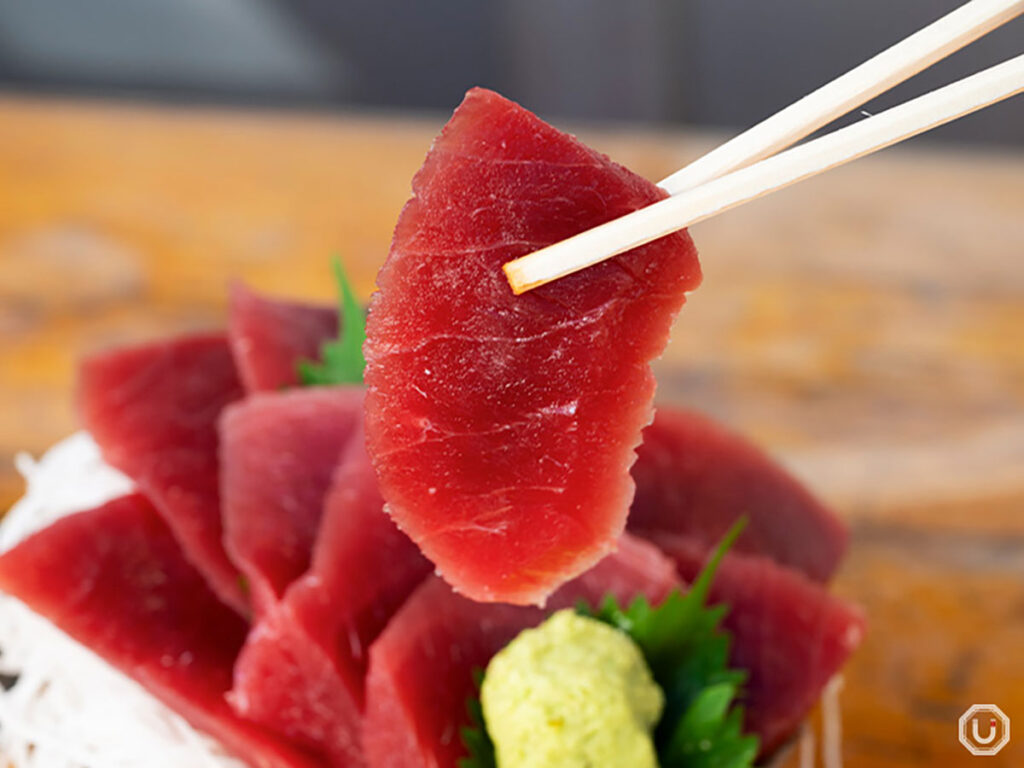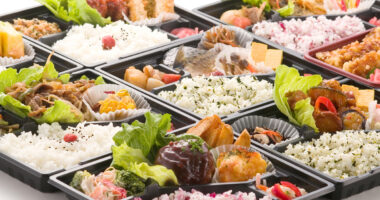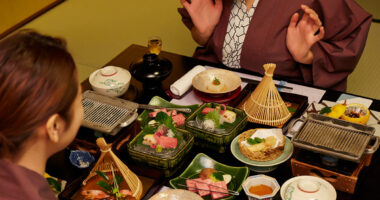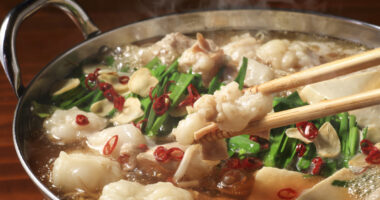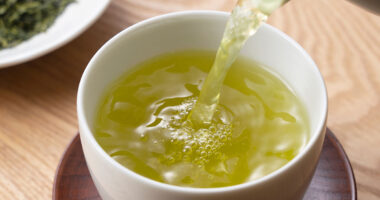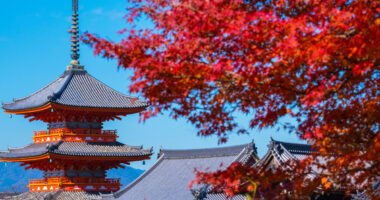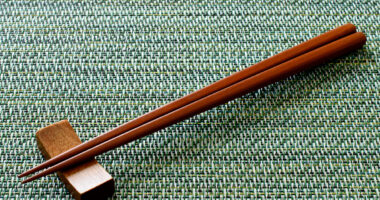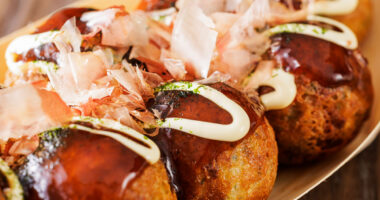For international travelers visiting Japan, tasting maguro (tuna) served as sushi or sashimi is a must-try culinary experience.
However, did you know that maguro varies greatly in name, flavor, and price depending on its cut or type? In Japan, maguro’s various cuts are meticulously classified, each prepared to highlight its unique characteristics.
This article covers essential knowledge for fully enjoying maguro, from the basics travelers should know to the unique benefits of each cut and price ranges by type, offering practical insights for your trip.
Maguro: What it is and its role in Japanese food culture
Maguro has long been a cherished ingredient in Japan.
Since the Edo period (1603 to 1868), maguro has been integral to the development of sushi culture. Today, it’s enjoyed not only raw in sashimi and sushi but also in cooked dishes like grilled or simmered preparations.
Basic characteristics of maguro
Maguro is a large, migratory fish, with its primary characteristic being the significant variation in fat content and flavor across different cuts.
Through years of experience, Japanese cuisine has developed precise classifications and cooking methods for each cut, a practice that distinguishes it as a unique aspect within global seafood culture.
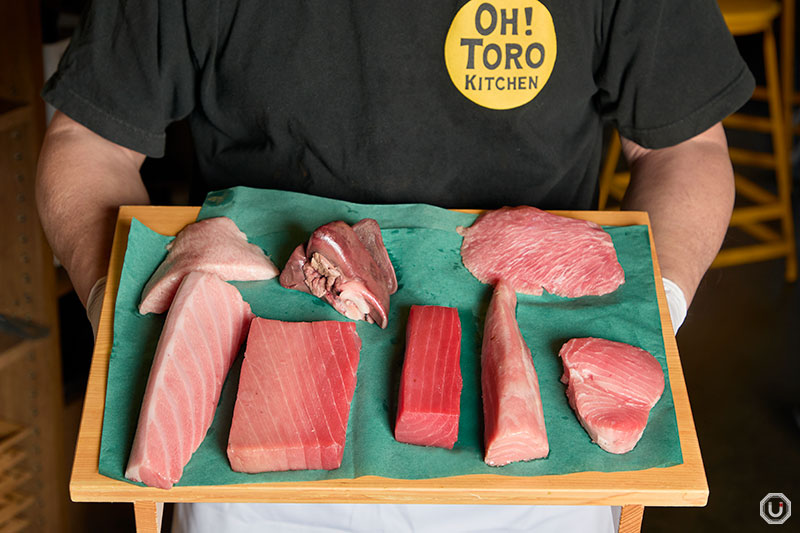
Freshly sliced maguro at OH! TORO KITCHEN
Maguro’s place in Japanese sushi culture
In the evolution of Edomae sushi, maguro gained prominence as a luxury ingredient with the introduction of the concept of enjoying toro (fatty tuna).
Today, maguro offers a range of options from lean akami (lean meat) to rich ōtoro (extra fatty tuna), catering to various budgets, making it a popular choice.
For foreign visitors, maguro dishes are essential to experiencing Japan’s rich food culture.
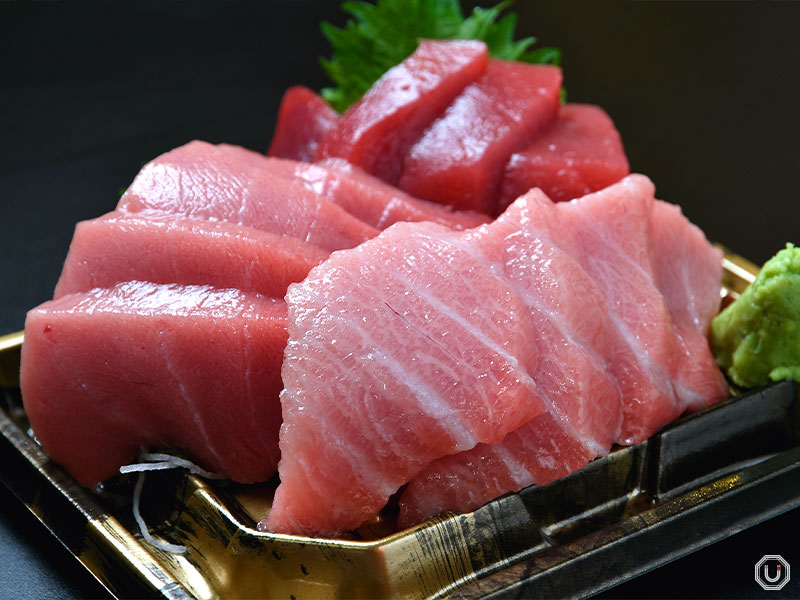
Special Fatty tuna/Very Fatty tuna/Medium tuna at Maguroya Kurogin
Maguro cuts and names: understanding flavor differences
To fully appreciate maguro, it’s crucial to understand the names and characteristics of its cuts.
In Japan, maguro is finely classified, with each cut given a specific name to distinguish its qualities. Here, we detail the main cuts.
kashira: rare head cuts
The head of maguro contains highly prized, rare cuts.
Kashira-niku (head meat) making up just 0.5% of the fish, is an ultra-rare cut with an unforgettable, rich flavor.
Hoho-niku (cheek meat) offers a thick, juicy texture, often served as a steak-like dish.
Meat from the jaw and eye area is commonly used in simmered or grilled dishes, with kabuto-yaki (whole roasted head) being a striking, conversation-starting dish.
Kama (collar) characteristics
Kama refers to the area below the gills, with only two pieces per fish, making it a rare cut.
Kama-toro, known for its marbled, melt-in-the-mouth texture and stunning appearance, is a delicacy served at high-end sushi restaurants.
Kama is enjoyed grilled, simmered, or as shabu-shabu hot pot, showcasing its versatile appeal.
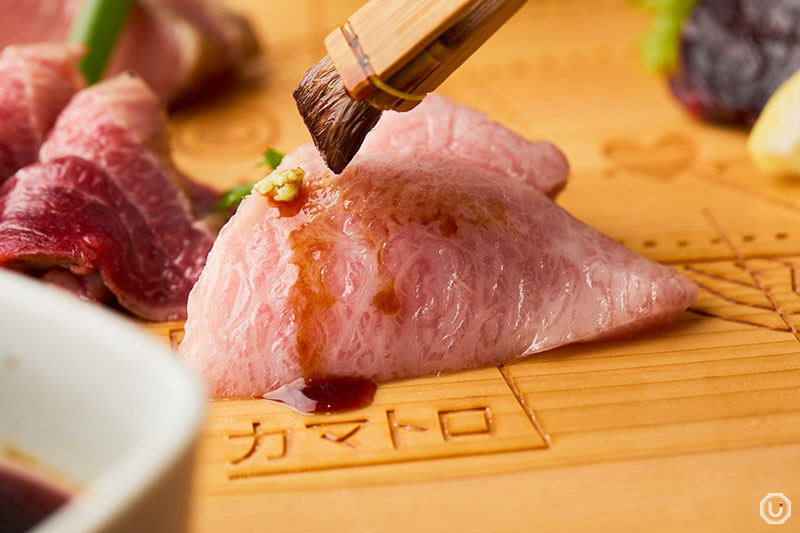
Kama-toro sashimi at OH! TORO KITCHEN
Toro classification and features
The most famous maguro cut toro (fatty tuna) is further categorized by fat content.
Premium otoro from the belly’s front to middle, boasts a melt-in-the-mouth texture and rich flavor. Chūtoro (medium fatty tuna), from the midsection between back and belly, offers a balanced blend of fat and lean meat, making it a popular choice.
Akami, with minimal fat, delivers a clean, umami-rich taste, ideal for those who prefer less richness.
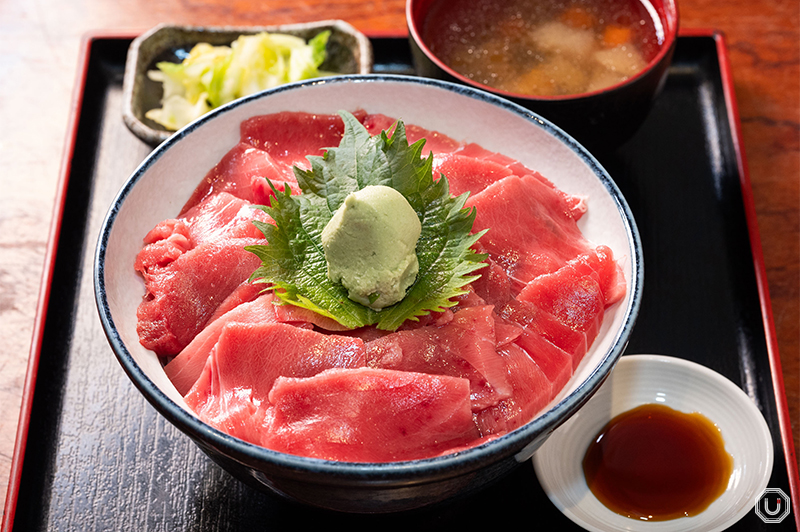
Mega Tuna Rice Bowl at Dagashiya
Maguro types and price ranges: Choosing for your travel budget
Japan features five main types of maguro, each with distinct flavors and price points.
Here, we explain their characteristics and price ranges to help you choose based on your travel budget and preferences.
Main maguro types
| Type | Features | Price Range |
|---|---|---|
| Hon‑maguro / kuro-maguro (bluefin tuna) | Premium quality, rich umami, high fat content | Top‑tier |
| Minami‑maguro (southern bluefin tuna) | Robust flavor, well‑balanced fat | High‑end |
| Mebachi‑maguro (bigeye tuna) | Lean‑focused, consistent quality | Mid‑range |
| Kihada‑maguro (yellowfin tuna) | Lean, refreshing taste | Affordable |
| Binnaga‑maguro / binchō‑maguro (albacore tuna) | Whitish flesh, used in canned tuna | Most affordable |
As the table shows, maguro types vary widely in price. We recommend deciding in advance which type suits your budget and preferences.
Maguro price guidelines
Wild hon-maguro, especially from Ōma, Aomori Prefecture, can fall in the top-tier price range, but imported wild maguro is relatively affordable.
Farmed maguro in Japan offers even lower prices, making it an accessible way to enjoy maguro’s deliciousness. At kaitenzushi (conveyor belt sushi) chains, maguro sushi can start at just over a hundred yen per plate.
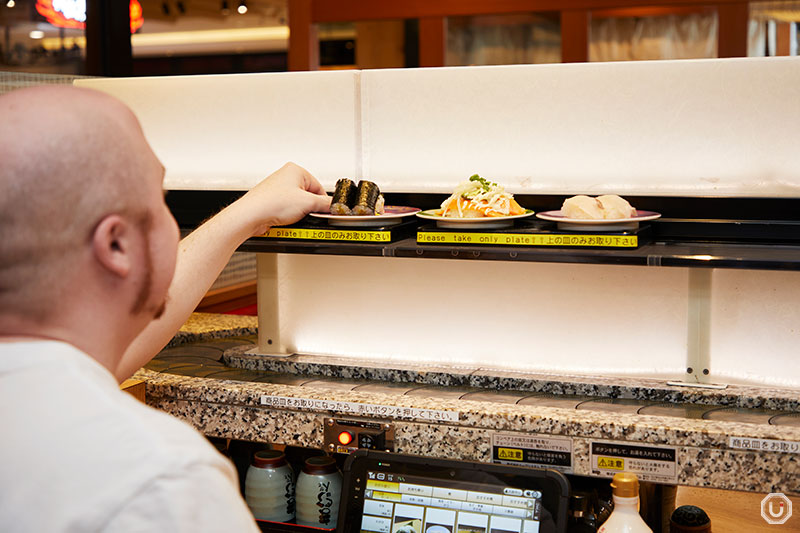
Interior of kaitenzushi restaurant Magurobito Akihabara
Choosing maguro for travelers
For first-time visitors, we recommend trying various maguro types at a kaitenzushi restaurant before savoring premium maguro at a high-end sushi establishment.
If your budget allows, start with hon-maguro ōtoro for a luxurious experience, though kihada-maguro akami also offers a delicious taste of Japan’s maguro.
Explore the world of maguro gradually, based on your travel schedule and budget.
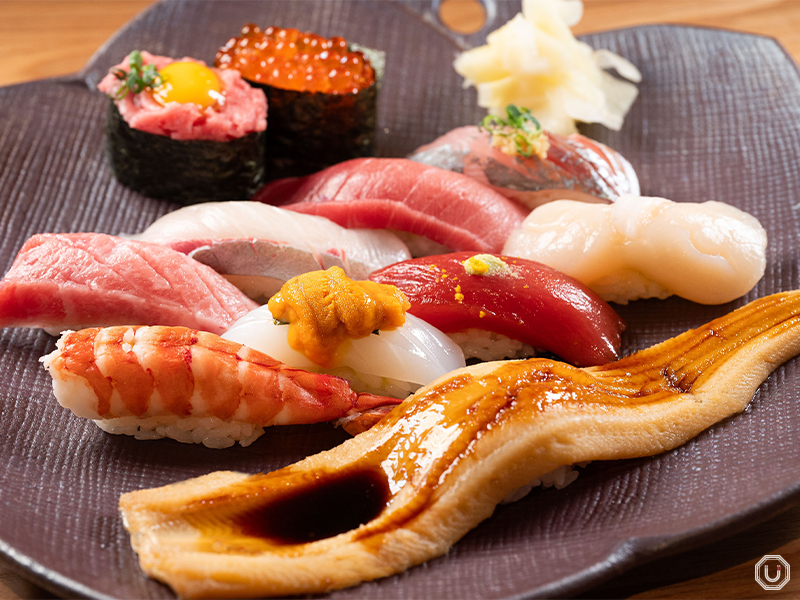
Shichifuku Nigiri Sushi (with miso soup) at Tsukiji Sushikuro
Maguro eating and enjoyment: Practical tips for travelers
To fully enjoy maguro, understanding proper eating and ordering methods is key. Here are practical tips for your trip.
Enjoying maguro in sushi
When ordering maguro sushi, it’s customary to eat in the order of akami, chutoro, then otoro.
This sequence, from lighter to richer flavors, allows you to distinctly appreciate each cut’s characteristics.
Adjust wasabi amounts by cut: use less for fatty otoro and more for akami to enhance the experience.
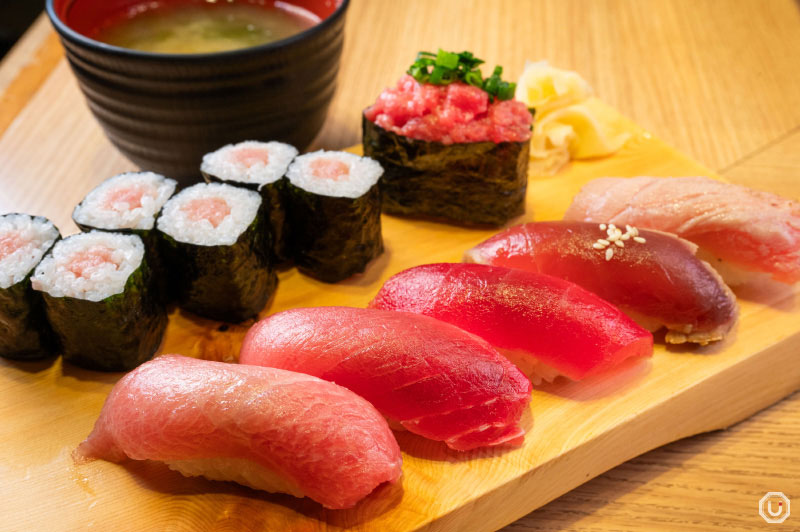
Tuna Sushi Variety Platter at Maguro Ichidai
Savoring maguro as sashimi
When eating maguro sashimi, pay attention to soy sauce application. Dip only a corner of the sashimi to avoid overpowering the fish’s umami.
For high-quality maguro, if you’re ordering more than one piece, taste it plain first to appreciate its natural flavor before adding soy sauce or wasabi to explore flavor changes.
Use garnishes like daikon or shiso sparingly to refresh the palate without overshadowing the maguro.
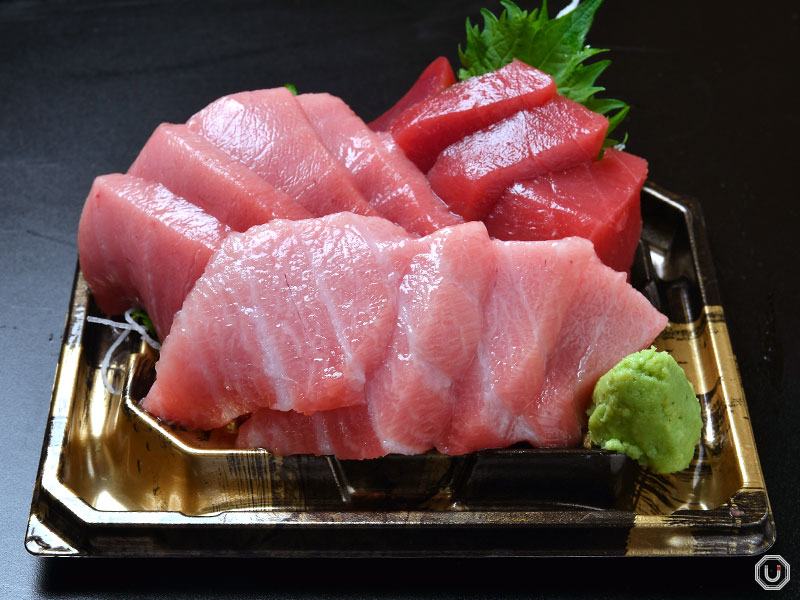
Special Fatty tuna/Very Fatty tuna/Medium tuna at Maguroya Kurogin
Common questions and precautions
Here are answers to common questions from travelers about maguro and precautions for enjoying it safely.
Maguro safety
Japan’s strict food safety standards ensure maguro is safe to eat raw.
However, it’s best to dine at reputable establishments.
Well-regarded sushi restaurants in tourist areas or local favorite shinise (historic) establishments typically offer fresh, safe maguro. If you’re unwell or unaccustomed to raw fish, opt for cooked maguro dishes as an alternative.
Allergies and dietary restrictions
Those with fish allergies should consult restaurant staff in advance.
For religious dietary restrictions, check with the restaurant, as many will explain available accommodations.
Recently, halal-certified sushi restaurants have increased, creating a welcoming environment for diverse travelers to enjoy maguro.
Avoiding price-related issues
At high-end sushi restaurants, maguro prices vary significantly by cut and origin, so confirm costs before ordering.
Especially for ‘market price’ items, always ask for the specific amount. Many restaurants now offer English menus, reducing language barriers.
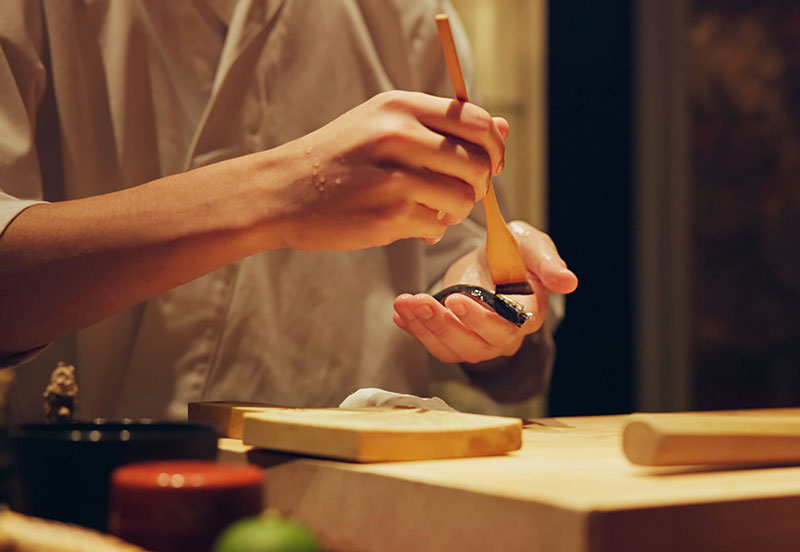
Photo for illustrative purposes
Summary
Maguro, a cornerstone of Japanese food culture, can be enjoyed more deeply by understanding its cuts and types, each offering unique flavors and price points.
From lean akami to rich otoro, the variety allows choices to suit any budget or taste.
First-time visitors should start with kaitenzushi to sample maguro basics before exploring premium options at high-end restaurants.
Picking trusted establishments and using proper ordering techniques ensures a safe and delicious maguro experience. Don’t hesitate to ask staff for clarification when needed.
